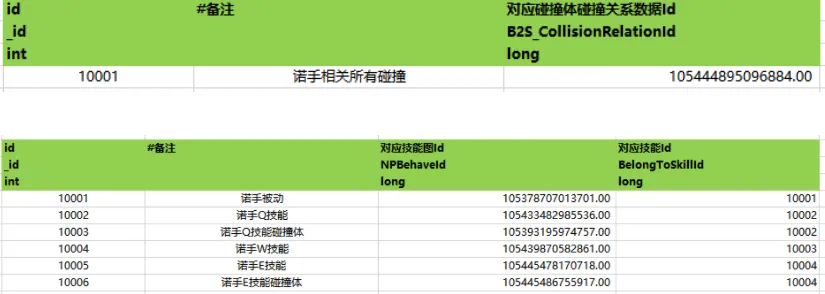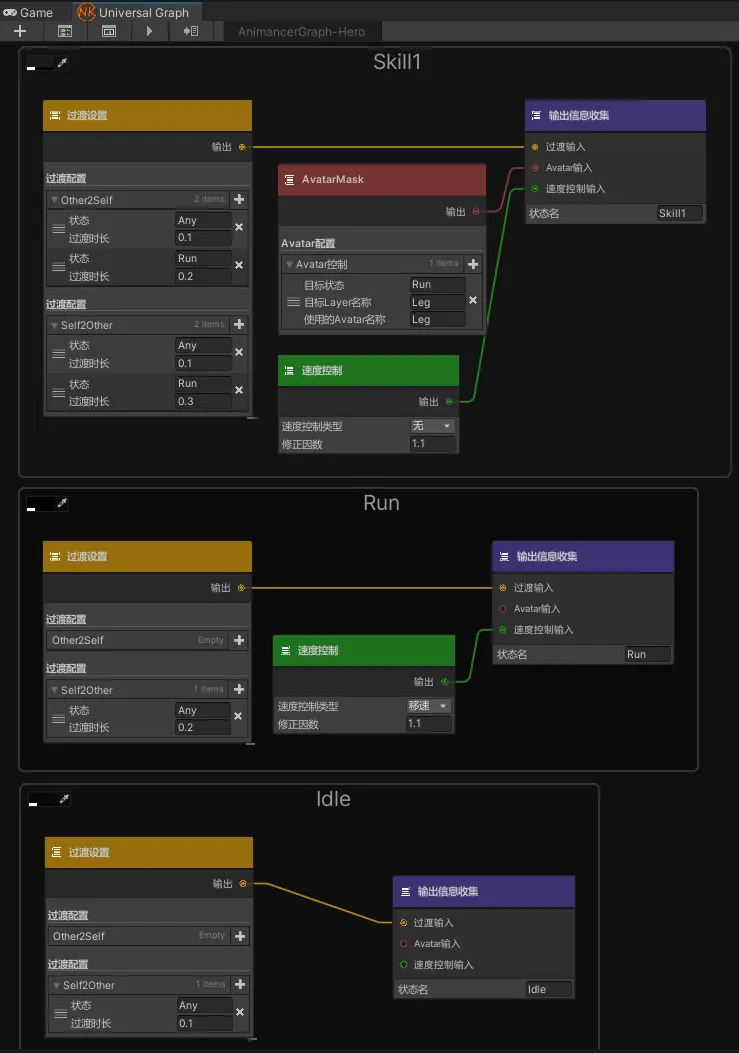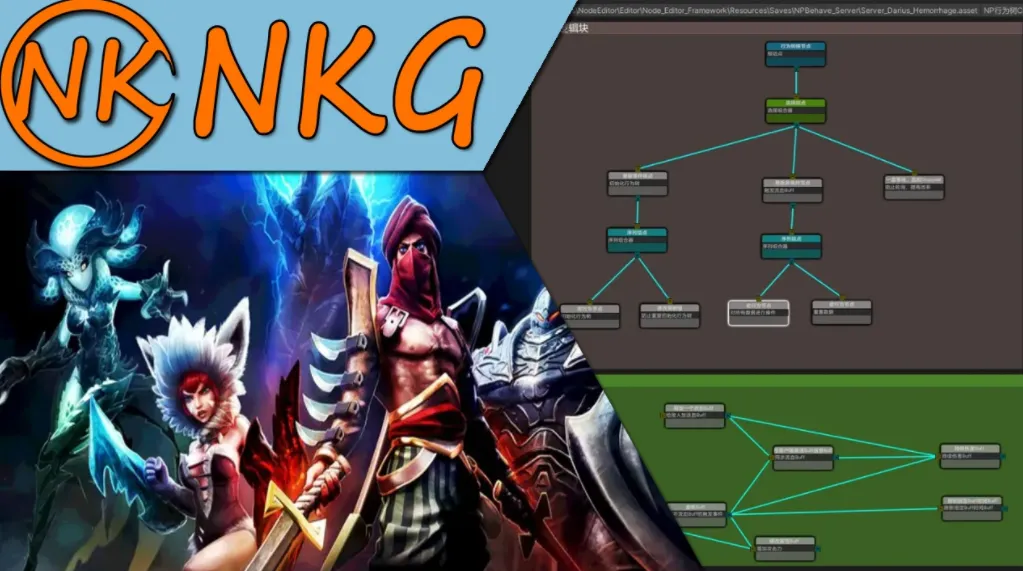基于行为树的MOBA技能系统:碰撞系统
前言
基于行为树的Moba技能系统系列文章总目录:https://www.lfzxb.top/nkgmoba-totaltabs/
一些游戏中简单的碰撞系统,可能就是手写几个圆形,矩形,扇形就够用了,但是Moba类游戏很多技能碰撞体是畸形的,比如派克的R,男枪的Q,R等都是不规则的,所以我们需要一个稳健的物理库来支持这些,自己处理碰撞体顶点数据,创建碰撞体到物理世界中,因为游戏类型原因,我选择了Box2D:https://github.com/erincatto/Box2D,对于FPS游戏,只有Bullet(3D物理库):https://github.com/bulletphysics/bullet3 可选,这里就不多说了。
由于碰撞系统本身需要和技能系统产生非常紧密的联系,所以涉及到的内容也会比较多,主要包括
- Box2D物理库介绍
- Box2D碰撞体编辑器拓展,负责制作碰撞体和导出碰撞体数据:https://www.lfzxb.top/box2d-unityvistualeditor/
- Box2D碰撞关系编辑器拓展,负责维护碰撞体之间的碰撞关系,并自动生成代码:https://www.lfzxb.top/box2d-collisionrelationvisualeditor/
- 碰撞系统架构设计
Box2D物理库
Box2D介绍
Box2D是一款开源的基于C++开发的2D游戏物理引擎,本项目使用的是C#版本的:https://github.com/Zonciu/Box2DSharp
然后是Box2D使用的动态AABB树碰撞检测算法:
A dynamic AABB tree broad-phase, inspired by Nathanael Presson’s btDbvt. A dynamic tree arranges data in a binary tree to accelerate queries such as volume queries and ray casts. Leafs are proxies with an AABB. In the tree we expand the proxy AABB by b2_fatAABBFactor so that the proxy AABB is bigger than the client object. This allows the client object to move by small amounts without triggering a tree update.
Nodes are pooled and relocatable, so we use node indices rather than pointers.
The Dynamic tree is the cross between a classic avl binary tree and a quadtree. The end effect is a quadtree that that only splits each node in half, and the split line isn’t fixed (the two halves aren’t equal sized like a quad tree). AVL comes in because quadree with dynamic splits can degenerate to essentially a list (O(n) lookup speed). The AVL is used to rebalance subtrees so to ensure O lg(N) lookup speed.
Best of all the code is MIT so feel free to copy / derived / shamelessly-steal / etc.
对于Box2D具体的文档,我之前有写过几篇文章,其实都是从《BOX2D物理游戏编程初学者指南》上摘录的
Box2D性能测试
使用
1 | //------------------------------------------------------------ |
测试创建1000个重叠圆形碰撞体
1 | public void UnitTest_CreateCollision() |
1 | BenchmarkHelper.Profile("测试创建1000个碰撞体", UnitTest_CreateCollision, 999); |
测试结果如下

1k碰撞体重叠在一起,进行了约50w次碰撞响应,耗时3000ms,平均每次碰撞计算需要耗时0.006ms,但是游戏中不可能会出现这种极端情况,如果4个碰撞体堆叠在一起,就要进行4 * (4 - 1) / 2 = 6次碰撞响应,如果依次零距离排开就只需要4 - 1 = 3次碰撞响应(这种情况依旧少见),以此类推,考虑到我们逻辑的处理,单个进程单帧纯碰撞检测耗时5ms的话,就是至少830个左右的碰撞体依次零距离排开,并且很多情况下我们游戏内的碰撞体是离散的,这个碰撞体最大数量还可以再大胆提升2~3倍,完全满足绝大多数游戏需求
Box2D碰撞与行为树交互
数据填写
技能编辑器中所有跨Canvas相关数据配置都只填写目标数据id(long)在Excel表中的id(int)
例如

其中碰撞体碰撞关系数据载体Id,碰撞体身上的行为树Id填写的都是Excel表中的Id

这样的好处是我们不用总是在编辑器中各个技能图跳来跳去修改Id,只在Excel中操作就行了
潜规则
Box2D碰撞计算是当前帧创建的碰撞体,下一帧才参与碰撞计算,所以对于想要拿到碰撞到的对象数据的行为树,至少需要存在3帧
- 第一帧创建碰撞体A,并为其附加行为树ABT
- 第二帧碰撞回调把A碰撞到的对象们Id传入ABT黑板中
- 第三帧行为树处理这些对象数据

碰撞系统架构设计
Runtime Debug
因为整个碰撞系统都在服务端的缘故,客户端这边拿不到碰撞数据,但是在开发阶段我们需要对释放技能的碰撞体做检查,查看其是否按我们预期生成,所以需要做一个运行时的碰撞体Debug工具
原理也很简单,从服务器主动发起RPC调用,然后用Unity的LineRender渲染从服务器收到的碰撞体顶点数据即可




